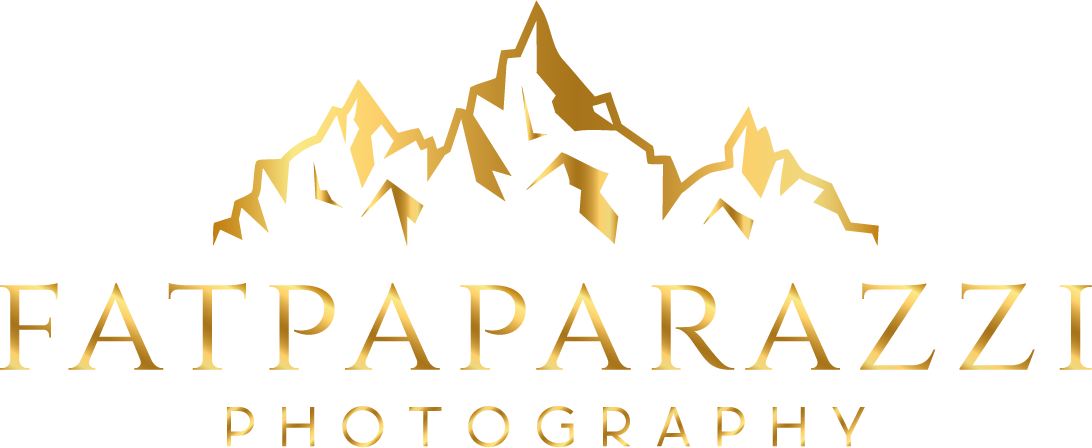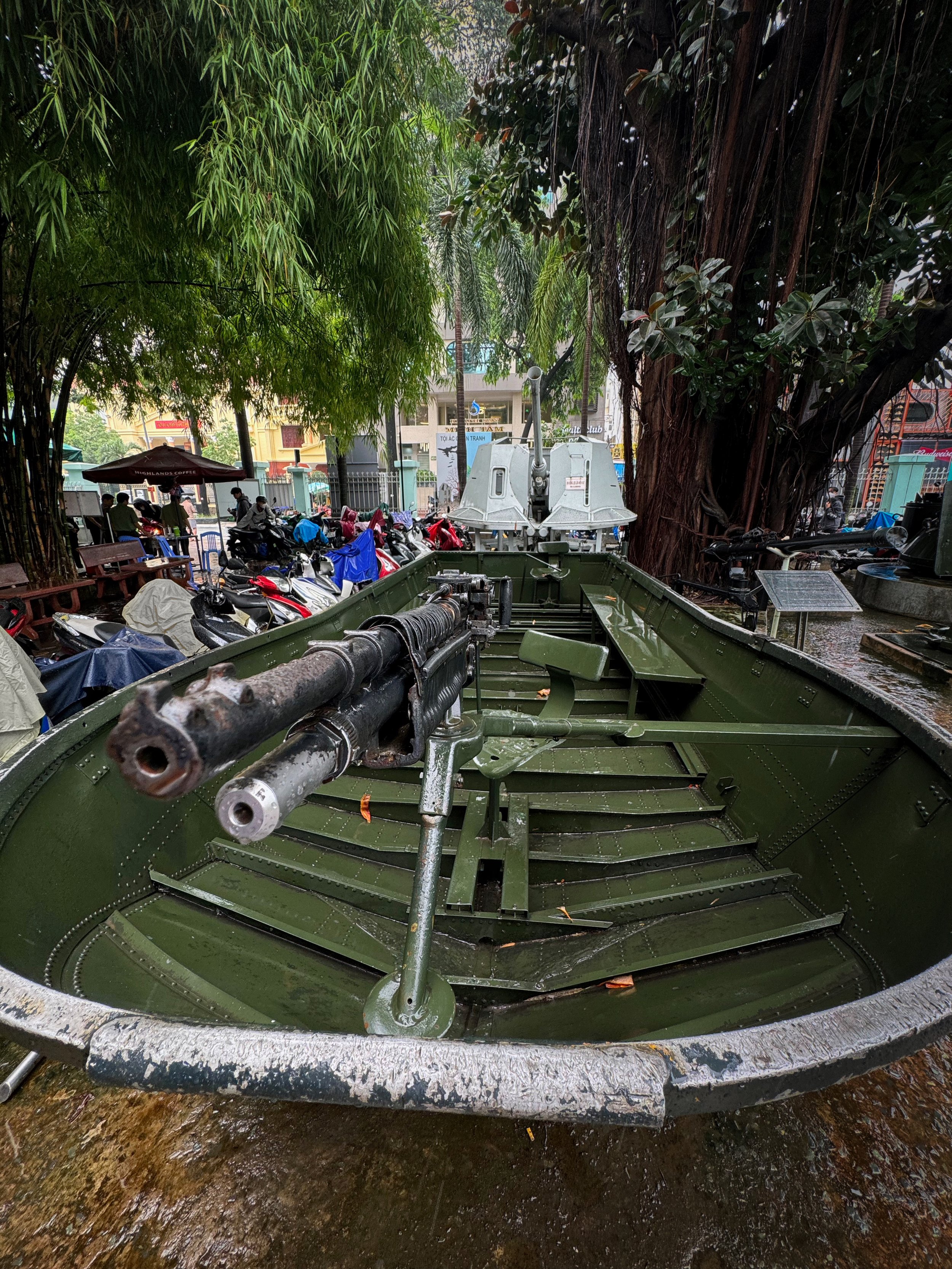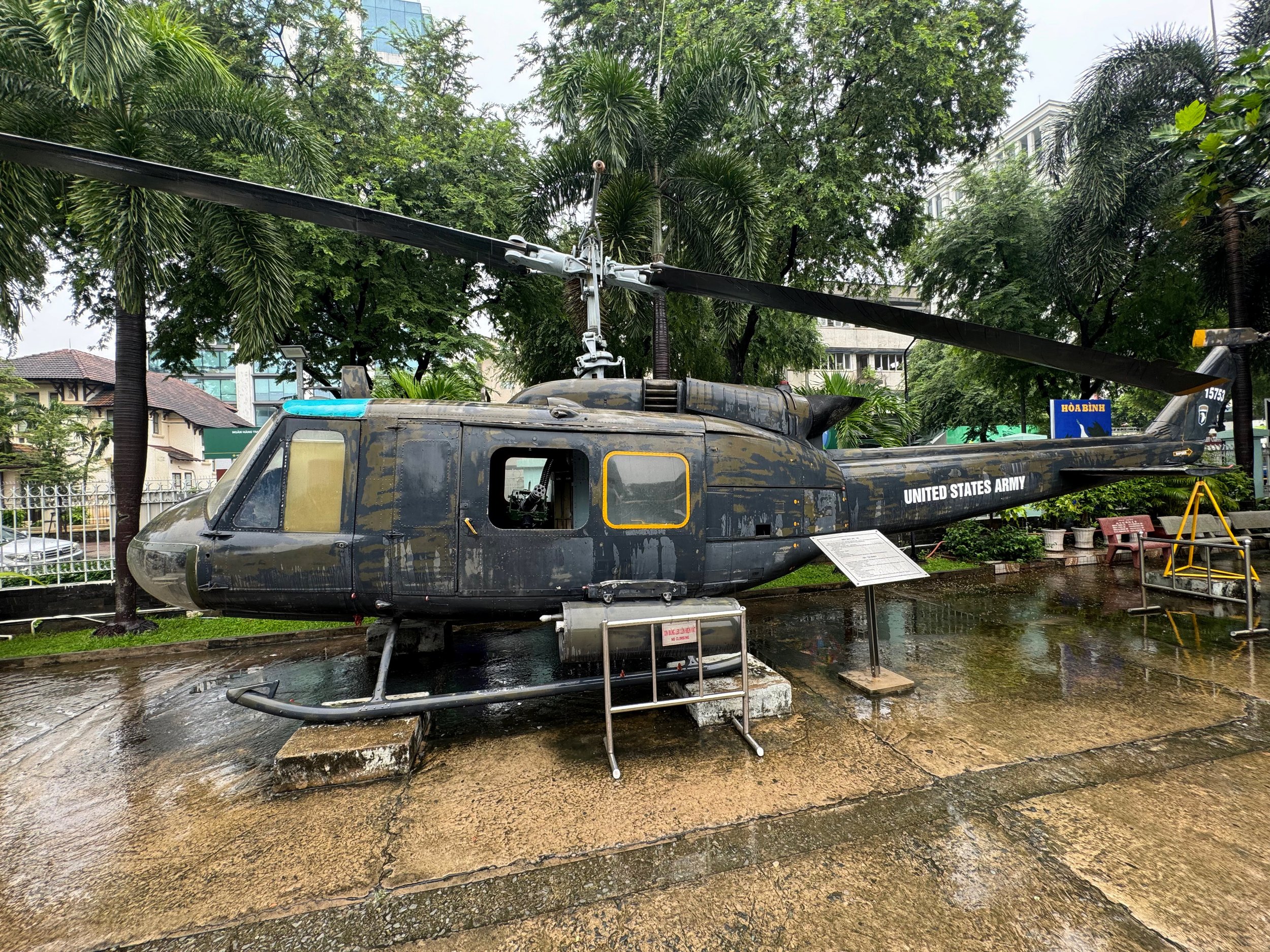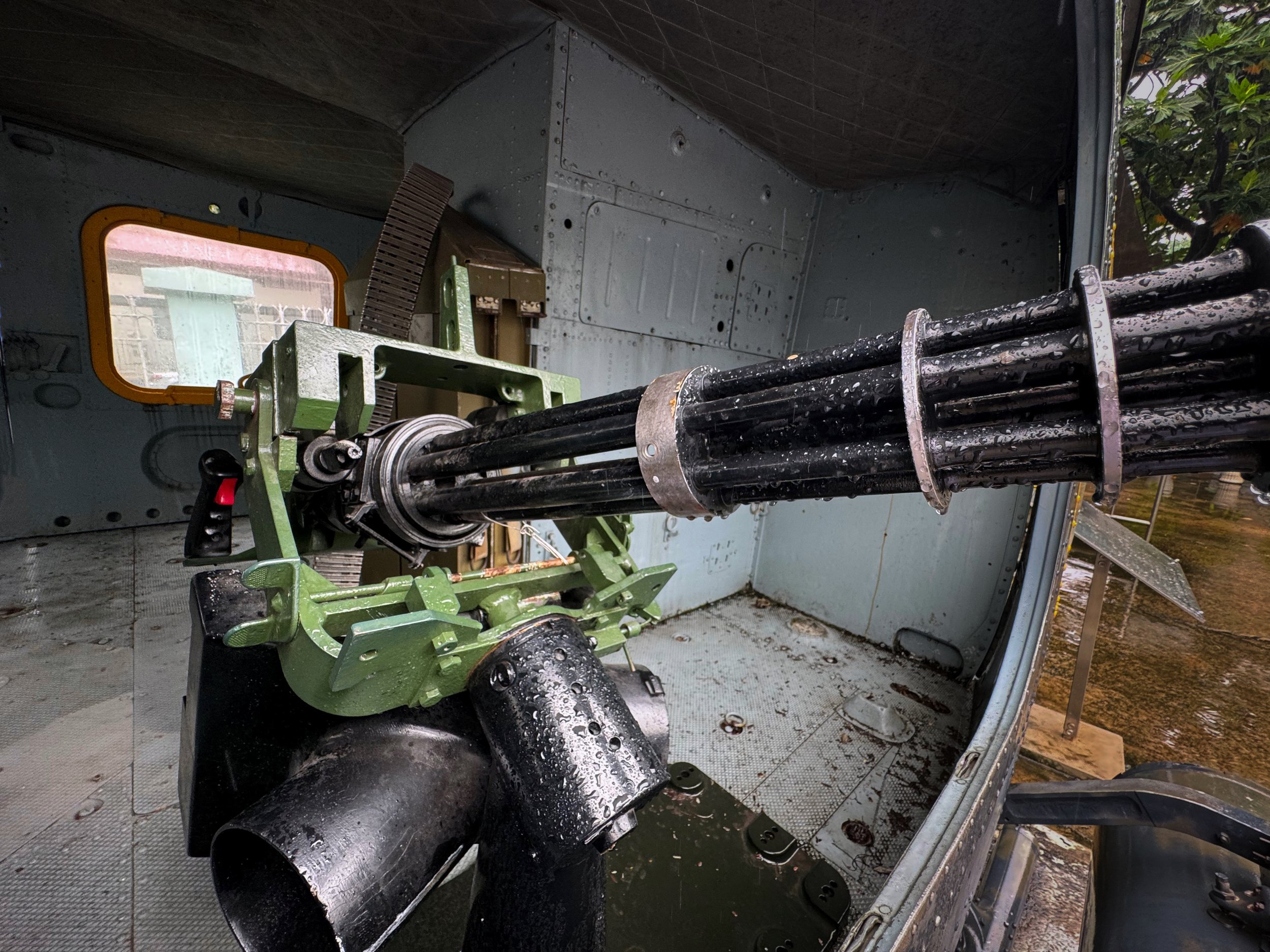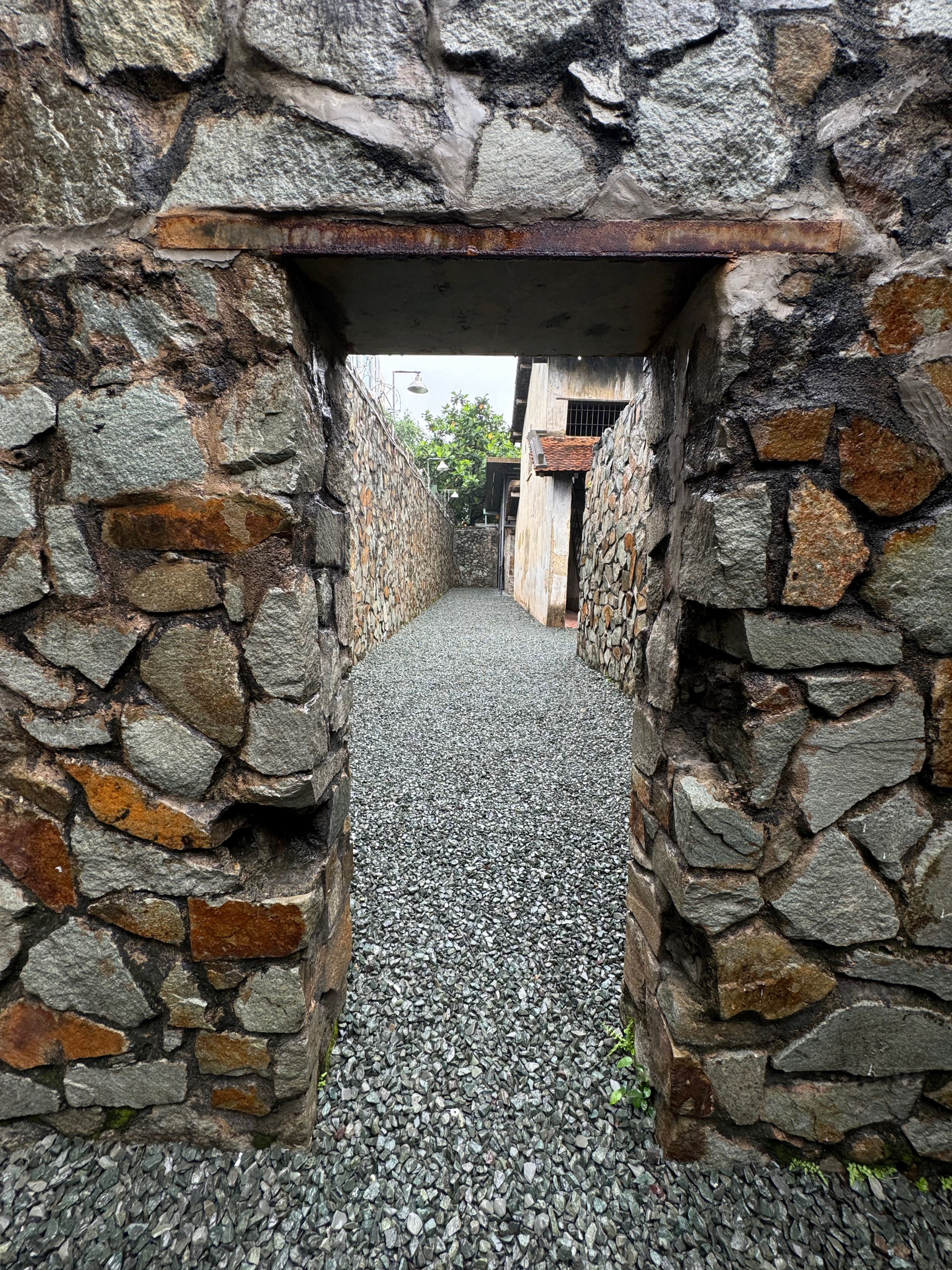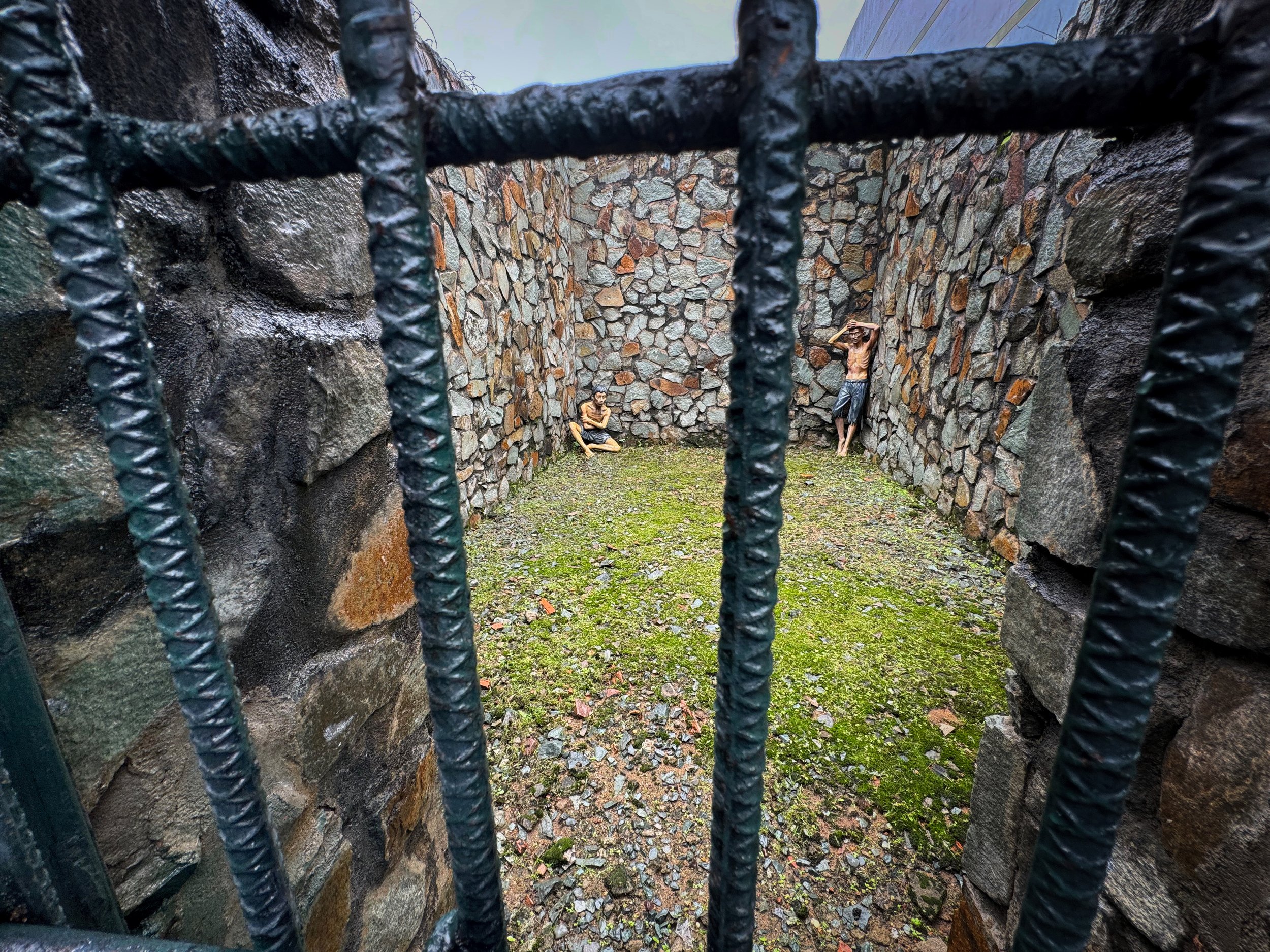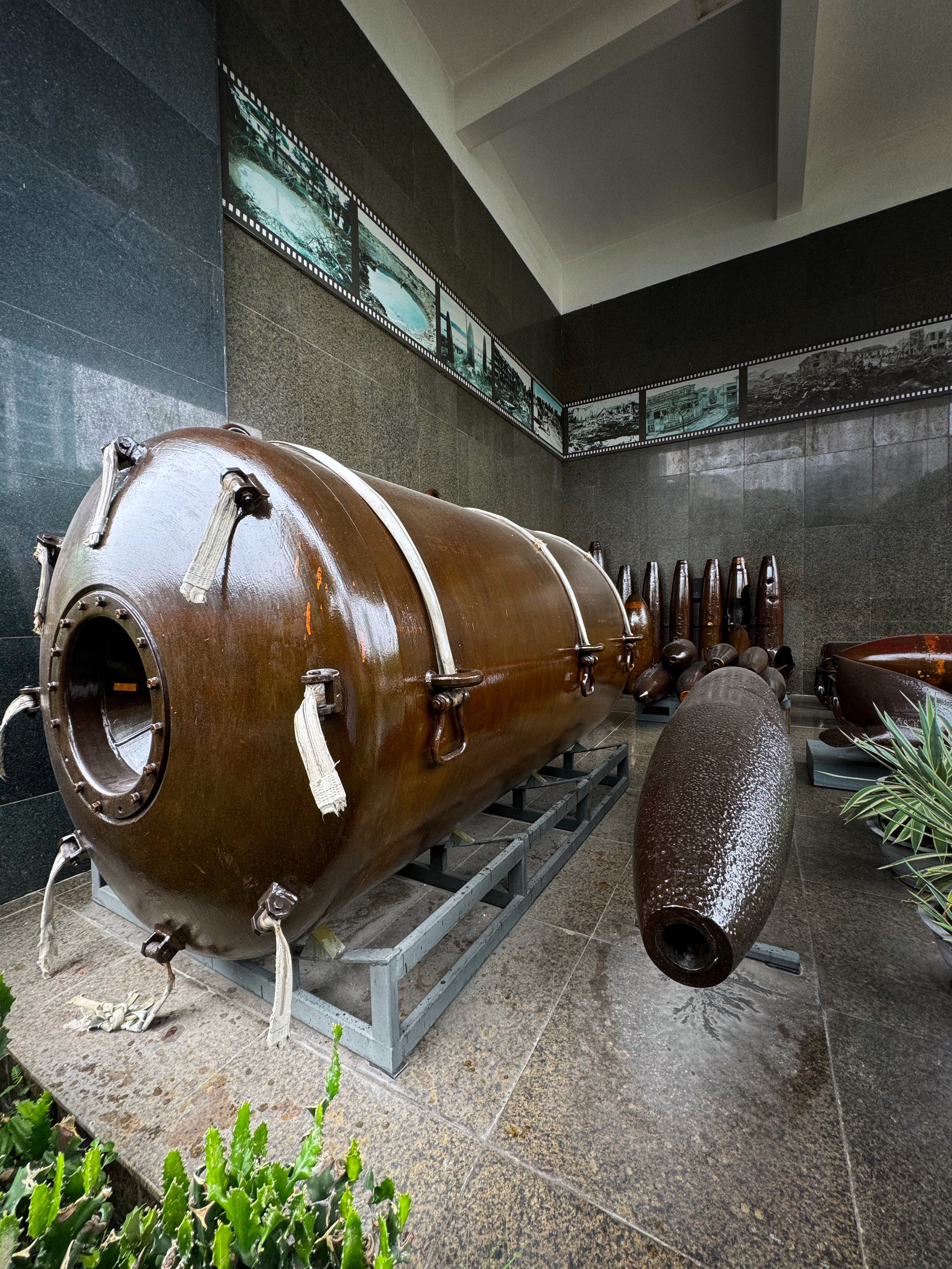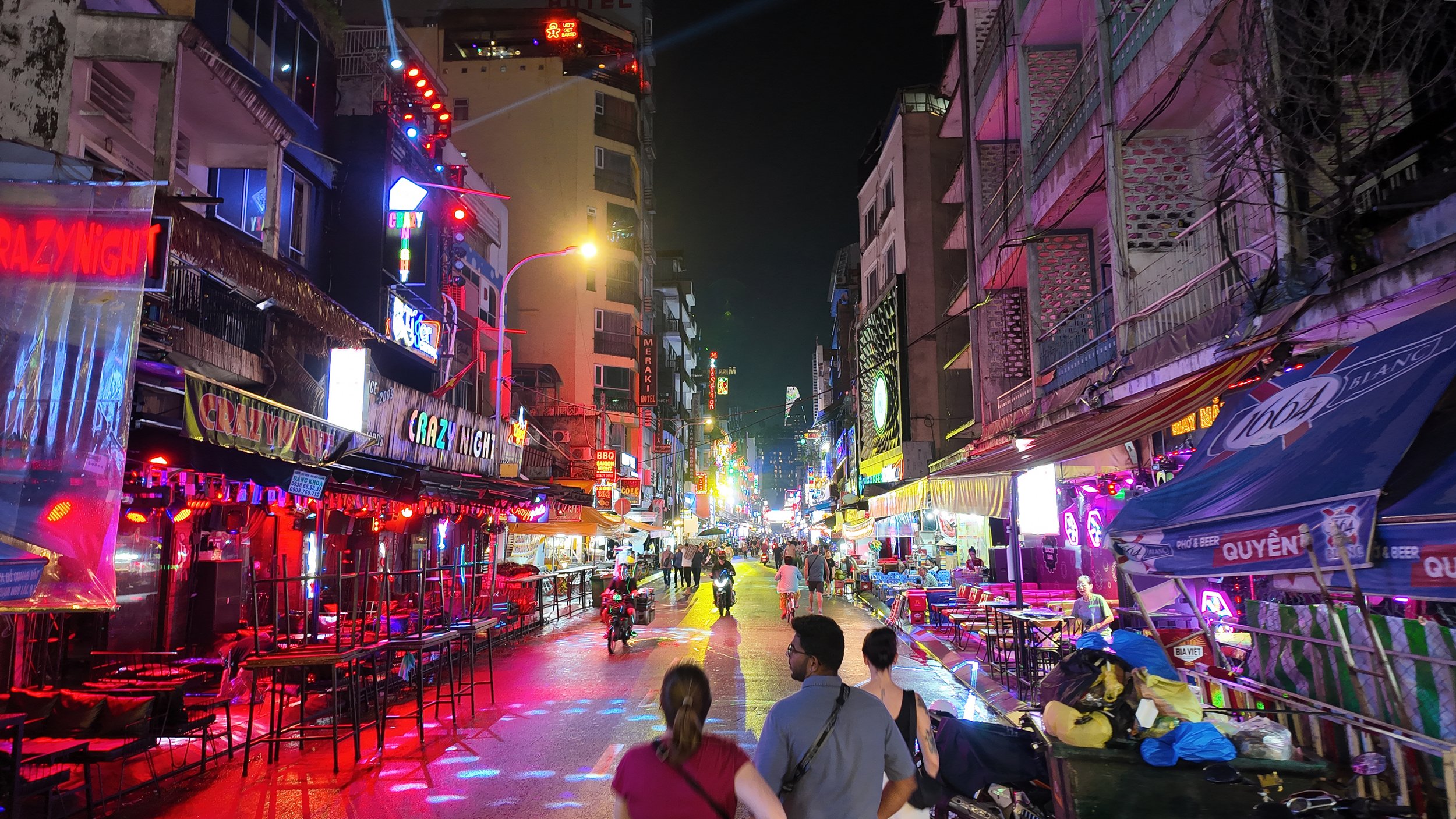12th Uprising - Ho Chi Minh City
It was still dark when we gathered in the lobby for an early departure to Da Nang Airport. Because we were leaving Hoi An the darkness and morning rain wasn’t really of concern and we drove the 45 minutes there in lethargic silence. We were headed to Ho Chi Minh City today 900km south and the most populous city in Vietnam with about 10 million inhabitants. The short flight of VN107 was spent mostly sleeping and on arrival we discovered the previously untroubling rain had followed us. With most of us skipping breakfast we unanimously agreed an early lunch should take priority and on such a wet and miserable day traditional Pho and vegetarian spring rolls proved to be the prefect remedy.
Ho Chi Minh City, formerly known as Saigon, is Vietnams largest city located at the southern part of the country. Geography defined by rivers and canals, the largest of which is the Saigon River, the region was first occupied by the Champa during the 2nd century. The Khmer Empire took control around 1145 but it wasn’t until a marriage between the Vietnamese Lord Nguyen’s daughter and the King of Cambodia in 1620 that regional relationships tempered and the people could move freely between countries. Soon after Vietnamese settlers began migrating to the area of Saigon. After succession to France in the 19th century, Saigon became the capital of French Indochina until 1954. Following the partition of French Indochina it became the capital of South Vietnam until captured by the North who renamed the city after their former leader Ho Chí Minh. Beginning in the 1990’s the city underwent rapid expansion and modernisation contributing to Vietnam's post-war economic recovery and helping to revive its international trade.
After lunch we went straight to the War Remnants Museum which by all accounts was a must see while in Ho Chi Minh City. Told from the Vietnamese perspective, it challenges the often Hollywood styled glamorisation of the war and is unapologetically brutal in every aspect. An earlier version of the museum opened in 1975 called the “Exhibition House for US and Puppet Crimes.” That in itself shows how unbending the Vietnamese are in telling their side of the story, and followed a tradition of such exhibitions exposing various war crimes. First those of the French and then of the Americans, who had both operated in the country. Through a series of name changes over the years, it was changed to its current appellative in 1995 following the normalization of diplomatic relations with the United States and the end of the US embargoes a year earlier.
The museum comprises a series of themed rooms on several levels with exhibits of various weaponry together with graphic photography and short accompanying text. Others detail the use and consequent effects of Agent Orange and other chemical defoliant sprays, and more showing in horrific detail that of napalm and phosphorus bombs and war atrocities such as the My Lai massacre. All of them attempt to convey historical truths through “self-representation”, presenting images and other features without contextualising them as other museums do. The curators do this knowing the Vietnam War and the interests of the Vietnamese people are not typically known in other nations. Here that information is provided but not force fed to the visitor.
Overall the exhibits were extremely confronting and the entire building eerily silent as respect on all levels was expressed by everyone. The occasional sob or tisk of disbelief could be heard, including this very writer, with many having to leave visibly overcome with the emotional and graphic assault.
The outside courtyard displays a wonderful collection of period military equipment including a UH-1 "Huey" helicopter, an F-5A fighter, M48 Patton tank and A-1 Skyraider attack bomber, but the more impressive static displays were an A-37 Dragonfly attack bomber and Boeing CH-47 Chinook helicopter. All are decorated with non-standard American Air Force livery for display purposes or perhaps in an effort of not glorifying their opponents.
There are a number of pieces of unexploded ordnance stored in the corner of the yard with their charges and/or fuses thankfully removed, together with the reproduction of cells and torture devices used by the South Vietnamese government against their political prisoners. No matter the side or the story being told, war is horrific and no manner of dutiful exhibition can ever change that.
Impression books at the exit record mixed responses to the museum. Most simply praise Vietnam for their courage, while some Americans harshly criticized the museum for its "propaganda" and "glorification of victory". Either way, the War Remnants Museum was a fascinating, if not confronting visit and certainly a must do while in Saigon.
After that confrontational experience we headed off to Saigon Central Post Office for what reason we will never know. Constructed while part of French Indochina in 1886, it exhibits Gothic, Renaissance and French influences and is now a major tourist attraction. Many visitors will send a postcard marked with the buildings offical stamp as a holiday momento, while others wonder at the portrait on the southern wall of Vietnam’s First KFC franchisee. They sure do love their chicken. The front facade exhibits plaques commemorating important scientists and engineers contributing to the development of communication technologies at the time. Morse, Ampere, Volta, Faraday, and Laplace. The whole building is typically French and extraordinarily baroque inside and out.
Saigon Central Post Office, Ho Chi Min City, Vietnam.
From there we took a small walking tour of the city while waiting for our hotel rooms to be readied. Ho Chi Minh City is a metropolis extremely different to the other cities already visited. Like its western counterparts the core is a typical mix of high-rise buildings, boutique hotels, specialty shopping and ornate parks and squares. At the foot of the Saigon People’s Committee Building - City Hall in western speak - stands a symbol of love from the Vietnamese people for former president Ho Chi Minh. Erected in 2011, this 7.2 metre high bronze statue stands formidably at the head of a square that in a bizarre, almost surreal way resembles that of Walt Disney in the land also bearing his name.
Fatpap was particularly interested in seeing the nearby Rex Hotel famously brought to life in the pulitzer prize winning novel Second Thoughts, which can be referred to here, while all were fascinated in finding the building immortalised as “the last mission”. During the fall of Saigon in 1975, an image was captured of the last evacuees fleeing what was mistakenly thought to be the US Embassy. It’s now an iconic photo symbolic of the last days of the Vietnam War. While the surrounds have changed somewhat the building immediately evoked memories for those old enough to remember it.
The Last Mission
Checking into our centrally located hotel some of us were unlucky enough to receive a completely windowless room. Forewarned in the brochure, this is due to the tightly compacted buildings in Saigon and inside was like being on E deck of an Estonian cheese freighter running the Gulf of Riga across to Stockholm.
There had been a group dinner arranged tonight and a few of us diehards headed downtown beforehand to check out the social life. Maddy, Mel, Atharva and Fatpap made the short stroll to Bui Vien, more commonly known as Walking Street. 850 meters long and right in the heart of the action, it is a backpackers delight with restaurants, coffee shops, hotels, pubs, and bars found along its entire route. The rain returned just on our arrival so to escape the downpour, and quite non-Vietnamese like, we decided on a Hawaiian bar for something different. It was of course happy hour so we alphabetically drank the cocktail menu rotating each new arrival around the table for all to sample. In the end we stayed put messaging the Chairman that we would sort ourselves out for dinner. Chris joined us soon after and someone mentioned a hankering for gourmet hamburgers. A quick google search and a short walk and we were all over it like stink on a pig.
Walking home in the intermediate rain at a reasonable hour for once, we stopped for photos in what we dubbed Siagon Times Square and then another one at the local Circle K convenience store for toothpaste, deodorant and other various supplies. As usual it was a fantastic night and the perfect end to another action packed day.
Times Square Ho Chi Minh style.
